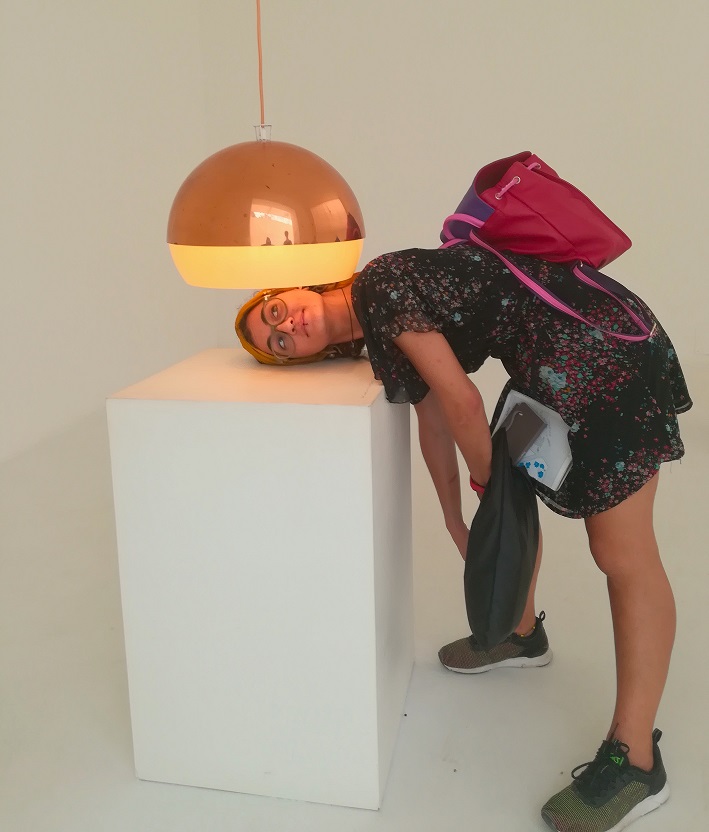
Having been given the opportunity to intern at the Malta Pavilion, commissioned by Arts Council Malta, during the 57th edition of the International Art Biennale in Venice, as part of an Erasmus+ placement, no number of meetings, starter packs or articles could have prepared me for what Venice had in store for me.
I spent two summer months in Venice, July and August, when the streets are crowded with distracted, generally well-dressed tourists taking images of themselves on the numerous bridges over the canals. Even more crowded than the streets were the multitude of grand palaces, and all other exhibiting spaces for that matter, overflowing with art from every span of time and corner of the globe. The greatest, most compact collection of international artwork was in fact within the main Biennale areas, the Arsenale and the Giardini.
Walking into the Maltese Pavilion at the Arsenale, the first stunner was the stark difference when comparing it to the neighbouring Pavilions; with its history museum-like set-up - along with object tags and all - contrasting with the grandiose, unified installations generally opted for. The second was the loud swearing coming from a digital artwork in the corner, like a naughty child, which had me looking around expecting shocked faces, realising that no one understood a thing. That, along with an assortment of around 200 objects of every nature and artworks by 13 artists - also beautifully varied and individual – made it feel like there was a wholesome chunk of Malta transported into this converted shipbuilding warehouse.
The question most commonly confronted though was: what aspect of Malta was being portrayed? At face value, some visitors passing through seemed uninterested, perhaps feeling that the history museum, archival-like display was not worth their time. A few shifts at the Pavilion indicated that it was just that aspect of time and curiosity that certain visitors were missing. Reading the context behind the interplay of items and artworks displayed, led to layers upon layers of charming, revealing details. Additionally, discussing these details with visitors who were eager to know more about the Pavilion only led to deeper insights, based on these individuals’ experiences. These characters and their stories undoubtedly ended up being highlights of the experience. Like a book one stumbles on, skims through and is fascinated by… how dull the days might have been without meeting with the ex-art student who went into anthropology, or the 70-plus year old journalist who, having been to Malta, found certain religious views that came across in the Pavilion rather striking.

Interacting with work by Erwin Wurm, Austrian Pavilion
This excavation of information became a personal methodology when in Venice, especially with regards to visiting collateral events. At some point towards the end of the two months, with over 200 exhibitions available apart from the multitude of Palazzos, it crossed my mind that I had seen enough, but was proven wrong again and again, as my curiosity drew me into the next Palazzo or installation. Indeed right up until the very end, I was in awe of the grand, elaborate, colourful frescoes on the walls of Ca’ Rezzonico, shocked to stumble in on a ‘University of Disaster’- portraying a number of blunt interpretations on the horrors that surround us and without a doubt, intrigued when I coincidentally turned into a small printing studio where I ended up learning an innovative printing technique thanks to a very curious character.
In addition to this being an extremely mind-opening experience, getting to know an array of beautiful characters, their insights, their stories, their quirks - especially thanks to the permanent site officers at the Maltese Pavilion - resulted in a successful two-month stay with sufficient material to keep me fuelled for the scholastic year ahead and enough wanderlust to have me looking for another travel opportunity soon after I landed back in Malta.
Martina Camilleri carried out an Erasmus+ placement with Arts Council Malta at the 57th edition of the Venice International Art Biennale from 3 July 2017 to 30 August 2017.
Submitting ...
Saving ...
Any applications related to this entity, will also be automatically deleted.